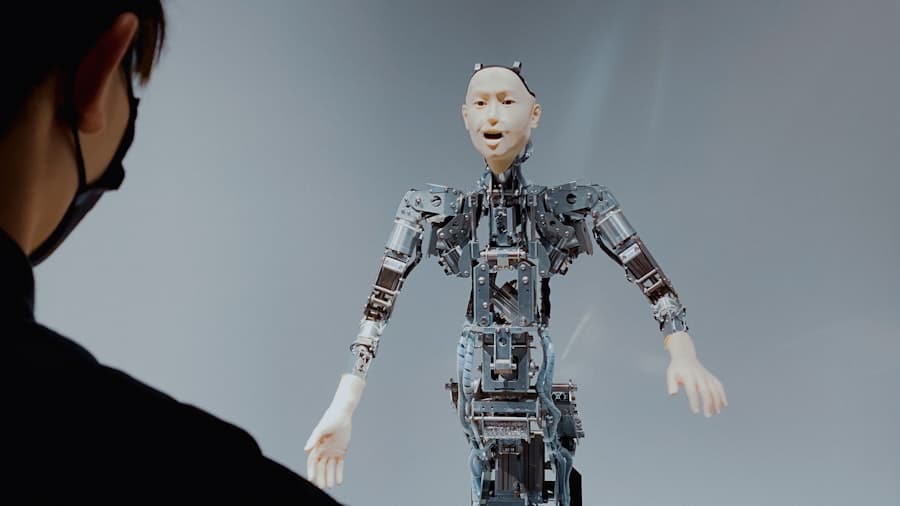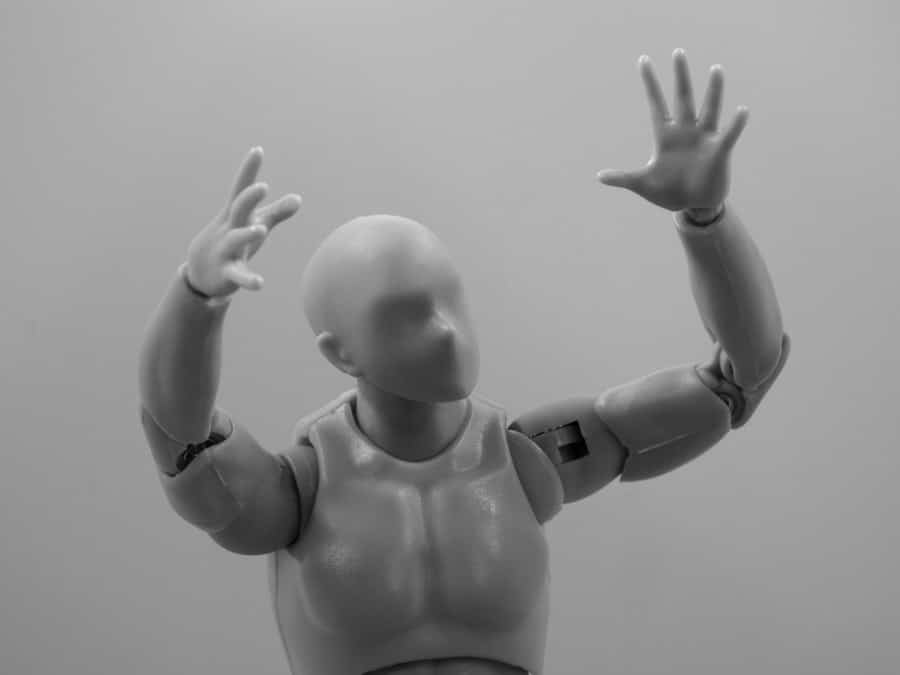Human augmentation technology represents a transformative frontier in the intersection of biology and technology, where the capabilities of the human body can be enhanced or extended through various means. This field encompasses a wide array of innovations, including wearable devices, implantable technologies, genetic modifications, and even neuro-enhancements.
However, the rapid advancement of technology in recent decades has propelled human augmentation into a realm of unprecedented possibilities, raising both excitement and concern. As we delve deeper into the 21st century, the integration of artificial intelligence, robotics, and biotechnology into human augmentation is becoming increasingly sophisticated. For instance, exoskeletons designed to assist individuals with mobility impairments are now being used in rehabilitation settings, allowing patients to regain movement and independence.
Similarly, brain-computer interfaces (BCIs) are being developed to enable direct communication between the brain and external devices, offering new avenues for individuals with severe disabilities. These advancements not only promise to enhance individual capabilities but also challenge our understanding of what it means to be human in an age where technology can fundamentally alter our physical and cognitive landscapes.
Key Takeaways
- Human augmentation technology aims to enhance human capabilities through the integration of technology into the human body.
- Potential benefits of human augmentation include improved physical and cognitive abilities, enhanced medical treatments, and increased productivity in various industries.
- Ethical considerations in human augmentation revolve around issues of consent, equality, and the potential for discrimination and inequality.
- The impact of human augmentation on society includes potential shifts in power dynamics, changes in the job market, and the need for new regulations and policies.
- Privacy and security concerns in human augmentation center around the protection of personal data, the potential for hacking or misuse of augmented technologies, and the need for secure systems and protocols.
The Potential Benefits of Human Augmentation
The potential benefits of human augmentation are vast and varied, spanning multiple domains such as healthcare, education, and even workplace productivity. In healthcare, for example, augmented reality (AR) technologies are being utilized to assist surgeons during complex procedures. By overlaying critical information directly onto a surgeon’s field of view, AR can enhance precision and reduce the likelihood of errors.
Furthermore, wearable health monitors that track vital signs in real-time can provide invaluable data for both patients and healthcare providers, leading to more personalized treatment plans and improved health outcomes. In the realm of education, human augmentation technologies can facilitate more immersive learning experiences. Virtual reality (VR) environments allow students to engage with complex subjects in a hands-on manner, fostering deeper understanding and retention of information.
For instance, medical students can practice surgical techniques in a simulated environment before ever stepping into an operating room. This not only enhances their skills but also builds confidence, ultimately leading to better-trained professionals entering the workforce. Additionally, cognitive enhancement technologies, such as nootropics or brain-training applications, have the potential to improve learning efficiency and cognitive performance across various age groups.
Ethical Considerations in Human Augmentation

As with any groundbreaking technology, human augmentation raises significant ethical considerations that must be addressed to ensure responsible development and implementation. One of the primary concerns revolves around equity and access; as these technologies become available, there is a risk that they may only be accessible to affluent individuals or communities, exacerbating existing social inequalities. This disparity could lead to a society where enhanced individuals possess significant advantages over those who cannot afford such enhancements, creating a new class divide based on augmented capabilities.
Moreover, the ethical implications of consent cannot be overlooked. In cases where augmentation technologies are used on vulnerable populations—such as children or individuals with cognitive impairments—ensuring informed consent becomes increasingly complex. The potential for coercion or exploitation in these scenarios raises questions about autonomy and individual rights.
Additionally, the long-term effects of certain augmentations remain largely unknown; thus, ethical frameworks must be established to guide research and application in a manner that prioritizes safety and well-being.
The Impact of Human Augmentation on Society
The societal impact of human augmentation is profound and multifaceted. As individuals begin to adopt augmentation technologies, we may witness shifts in social norms and expectations regarding physical and cognitive abilities. For instance, if cognitive enhancement becomes commonplace, there may be increased pressure on individuals to augment their own capabilities to remain competitive in academic or professional environments.
This could lead to a culture where augmentation is not merely an option but an expectation, fundamentally altering how we perceive achievement and success. Furthermore, the integration of augmented individuals into society poses challenges related to identity and belonging. As people enhance their physical or cognitive traits, questions arise about what it means to be “normal” or “human.” The potential for augmented individuals to be viewed as superior or inferior based on their enhancements could foster divisions within society.
Additionally, as augmented capabilities become more prevalent in various sectors—such as sports or the arts—issues related to fairness and authenticity will need to be addressed. The implications for competition and recognition in these fields could lead to significant debates about the nature of talent and merit.
Privacy and Security Concerns in Human Augmentation
With the rise of human augmentation technologies comes an array of privacy and security concerns that warrant careful consideration. Many augmentation devices collect vast amounts of personal data, from biometric information to behavioral patterns. This data can be invaluable for improving health outcomes or enhancing user experiences; however, it also raises significant risks regarding data security and privacy breaches.
For instance, if sensitive health data collected by wearable devices were to fall into the wrong hands, it could lead to identity theft or discrimination based on health status. Moreover, the potential for surveillance through augmented technologies cannot be ignored. Devices equipped with cameras or sensors may inadvertently contribute to a culture of constant monitoring, where individuals are tracked not only by corporations but also by governments or malicious actors.
This raises critical questions about consent and autonomy; individuals may not fully understand how their data is being used or shared. As such, robust frameworks for data protection and privacy must be established alongside the development of human augmentation technologies to safeguard individual rights.
The Role of Government and Regulation in Human Augmentation

The role of government and regulation in the realm of human augmentation is crucial for ensuring that these technologies are developed and implemented responsibly. Policymakers face the challenge of creating regulations that balance innovation with public safety while addressing ethical concerns related to equity and access. Regulatory frameworks must be adaptable enough to keep pace with rapid technological advancements while providing clear guidelines for developers and users alike.
One approach could involve establishing regulatory bodies specifically focused on human augmentation technologies. These entities could oversee research and development processes, ensuring that ethical standards are upheld throughout the lifecycle of these innovations. Additionally, governments may need to collaborate with industry stakeholders to create comprehensive policies that address issues such as data privacy, consent protocols, and equitable access to augmentation technologies.
By fostering an environment that encourages responsible innovation while protecting public interests, governments can play a pivotal role in shaping the future of human augmentation.
The Need for Inclusivity and Accessibility in Human Augmentation
Inclusivity and accessibility are paramount considerations in the development of human augmentation technologies.
This means involving individuals from various backgrounds in the design process to ensure that products are not only effective but also user-friendly for all demographics.
For instance, when developing prosthetic limbs or assistive devices, it is crucial to consider factors such as cultural differences, socioeconomic status, and varying levels of technological literacy among potential users. By prioritizing inclusivity in design and implementation processes, developers can create solutions that empower individuals rather than alienate them. Furthermore, ensuring that these technologies are affordable and accessible will help mitigate disparities in access and promote a more equitable society where everyone has the opportunity to benefit from advancements in human augmentation.
The Importance of Ethical Decision-Making in Human Augmentation Development
Ethical decision-making is fundamental in guiding the development of human augmentation technologies toward positive outcomes for society as a whole. As researchers and developers navigate complex moral landscapes—balancing innovation with ethical considerations—they must prioritize transparency and accountability throughout their processes. Engaging with ethicists, sociologists, and diverse community stakeholders can provide valuable insights into potential implications and help identify areas where ethical dilemmas may arise.
Moreover, fostering a culture of ethical awareness within organizations involved in human augmentation development is essential for promoting responsible practices. This includes implementing training programs that emphasize ethical considerations at every stage of product development—from initial research through commercialization. By embedding ethical decision-making into organizational frameworks, developers can better anticipate challenges related to equity, privacy, and societal impact while striving to create technologies that enhance human capabilities without compromising individual rights or societal values.
In the rapidly evolving landscape of human augmentation technology, ethical considerations are becoming increasingly crucial. As we explore the potential future of these advancements, it’s essential to consider how they intersect with other technological innovations. For instance, the development of sophisticated software tools plays a significant role in shaping the capabilities and applications of augmentation tech. An article that delves into the realm of cutting-edge software is Best Software for 3D Animation. This piece highlights the importance of advanced software in creating realistic simulations and models, which can be pivotal in testing and developing human augmentation technologies. By understanding the synergy between software advancements and augmentation tech, we can better navigate the ethical implications and ensure responsible innovation.
FAQs
What is human augmentation technology?
Human augmentation technology refers to the use of technological advancements to enhance human capabilities, such as physical strength, cognitive abilities, or sensory perception. This can include technologies like prosthetics, brain-computer interfaces, genetic engineering, and more.
What are the ethical considerations surrounding human augmentation technology?
Ethical considerations surrounding human augmentation technology include issues related to consent, equality, privacy, and potential societal impacts. There are concerns about the potential for creating a divide between augmented and non-augmented individuals, as well as the implications of altering human nature and the potential for misuse of the technology.
How is human augmentation technology currently being used?
Human augmentation technology is currently being used in various fields, including medicine, sports, and the military. Prosthetic limbs, for example, have greatly improved the quality of life for many amputees, while cognitive enhancement technologies are being explored for potential therapeutic applications.
What are some potential future applications of human augmentation technology?
In the future, human augmentation technology could be used for a wide range of applications, including enhancing physical and cognitive abilities, extending human lifespan, and even creating entirely new senses or abilities. However, the ethical implications of these potential applications are still being debated.
What are some of the key ethical principles to consider when developing human augmentation technology?
Key ethical principles to consider when developing human augmentation technology include autonomy, beneficence, non-maleficence, and justice. It is important to ensure that individuals have the autonomy to make informed choices about augmentation, that the technology provides overall benefit, does not cause harm, and is distributed fairly within society.

